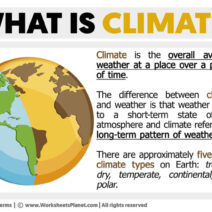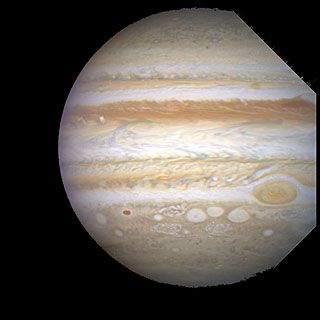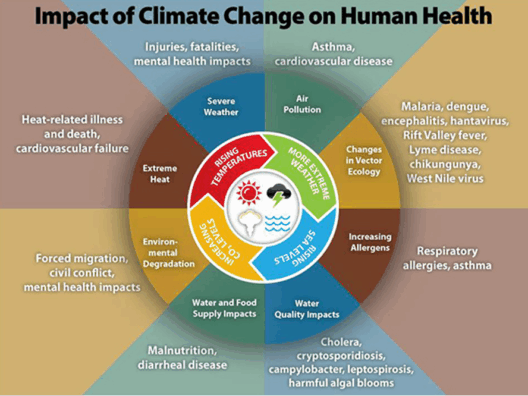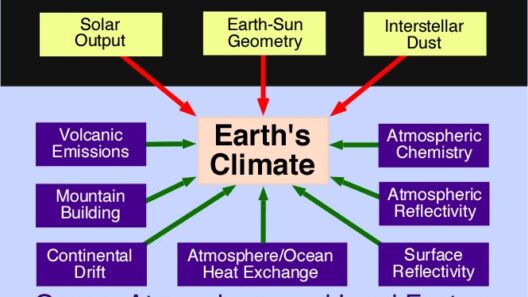The climate of Jupiter is a tapestry of ferocity and mystique, woven together by swirling clouds of gas, tempestuous winds, and the cosmic dance of atmospheric phenomena. As the largest planet in our solar system, Jupiter serves as a colossal gas giant, providing a fascinating glimpse into the dynamic systems that govern its weather patterns. With a composition predominantly made up of hydrogen and helium, the atmospheric conditions on Jupiter present a stark contrast to the terrestrial climates of Earth. Exploring Jupiter’s climate is akin to peering into an extraterrestrial ocean where the waves are made of gas, and storms rage with an intensity that challenges comprehension.
At the heart of Jupiter’s climate lies its staggering complexity. The planet is enveloped in thick bands of clouds that form due to the rapid rotation of the planet, completing a full turn every approximately 10 hours. This swift rotation not only shapes the weather patterns but contributes to the distinctive banding visible from afar. These bands alternate between zones of lighter clouds and darker bands, dubbed “zones” and “belts” respectively. The zones, often characterized by white ammonia clouds, are frequently punctuated by the darker, more turbulent belt regions where storms and vortices thrive. The interplay between these zones and belts generates a rich tapestry of weather events, enriching Jupiter’s visual splendor.
One of the most iconic features of Jupiter’s atmosphere is the Great Red Spot, a colossal storm that has raged for centuries. This giant anticyclonic storm, with a diameter that could envelop Earth two to three times over, serves as a reminder of the planet’s untamed nature. Winds within the storm churn at speeds of over 300 kilometers per hour (186 mph), and its reddish hue adds an enigmatic layer to Jupiter’s already vivid appearance. The longevity and persistence of the Great Red Spot provoke inquiries into its mechanics and how such monumental systems can endure amidst the planet’s chaotic climate.
But storms are not the whole story; wind patterns across Jupiter’s vast atmosphere exhibit remarkable characteristics. High-speed jet streams traverse the planet, with winds that can reach staggering velocities. These fast-moving currents divide the entire atmosphere into distinct bands and fuel the formation of other meteorological phenomena, including smaller storms and disturbances. The dynamic nature of these winds is not merely for show; it is a fundamental component of Jupiter’s climate regulation. The exchange of heat and energy between the upper and lower atmosphere drives much of the activity witnessed on this celestial body.
Temperature fluctuations on Jupiter also add layers of depth to its climatic characterization. While the upper atmosphere, where cloud formations reside, can be extremely cold, with temperatures plummeting to around -145 degrees Celsius (-234 degrees Fahrenheit), lower atmospheric temperatures tend to be significantly higher due to the planet’s immense gravitational pressure. Interestingly, temperature does not decrease uniformly with altitude; in fact, the deeper you delve into Jupiter’s atmosphere, the warmer it becomes. This phenomenon leads to a temperature inversion, whereby conditions present a sharp contrast to those found on Earth.
Moisture plays a pivotal role in Jupiter’s weather systems. The planet harbors a wealth of water vapor, contributing to cloud formation and precipitation in the form of ammonia and water clouds. Disparate mechanisms, including evaporation and the subsequent rise of warm, moist air, fuel this water cycle. The collision of cool upper clouds with warm, moist air from the depths produces an array of phenomena including lightning, auroras, and even rain—the latter of which, in the intensity of Jupiter’s realm, can transform the gas giant into a tempestuous cornucopia of atmospheric fireworks.
Analyzing the cycles of weather on Jupiter draws further intrigue into the planet’s inviting yet chaotic climate. A distinct wave of seasons can be detected, driven primarily by the planet’s axial tilt of just 3 degrees. Although this minor tilt results in subtle seasonal variations, the sheer scale of Jupiter ensures weather alterations affect its enormous size disproportionately. It is crucial to note, however, that unlike Earth’s seasonal transitions dictated by orbital mechanics, Jupiter’s weather changes are predominantly driven by its internal heat and complex atmospheric interactions.
The atmospheric dynamics of Jupiter also extend to its moons, particularly those of the Galilean family—Io, Europa, Ganymede, and Callisto. These moons are not just passive observers but engaged participants in Jupiter’s complex weather system. For instance, Io’s intense volcanic activity affects not only its own environment but contributes to a vast torus of plasma that permeates Jupiter’s radiation belts, impacting the magnetic field and, consequently, its atmospheric interactions. This interplay between the moons and the planet enriches our understanding of a gas giant’s weather mechanisms.
Jupiter’s escape velocity, significantly greater than Earth’s, prevents many of its atmospheric gases from dissipating into space. This phenomenon coupled with the planet’s size contributes to a heavy atmosphere, allowing weather systems to develop in ways that Earth simply cannot replicate. This atmospheric pressure remains a fertile ground for ongoing study, as scientists endeavor to unravel the intricacies behind the swirling clouds and atmospheric behaviors that render Jupiter a captivating subject of research.
In conclusion, the climate of Jupiter is a spectacle of ephemeral beauty and chaos, characterized by immense storms, complex wind systems, and temperature anomalies that juxtapose the serene and the tumultuous. It serves as a reminder of the inherent unpredictability of nature and the dynamic processes that define planetary systems. Jupiter, the gas giant, encapsulates an atmospheric symphony, echoing the grandeur of celestial phenomena while inviting exploration and understanding from those who dare to venture beyond the confines of our terrestrial experiences.








